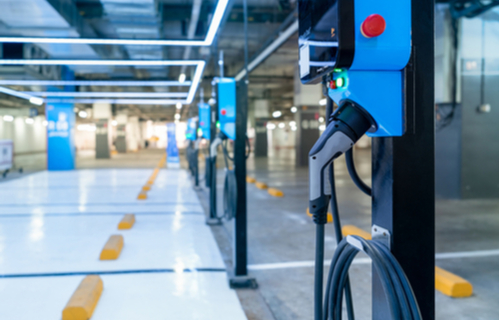Our 7-step plan for installing EV charging stations in your multi-family residential building's parking

As more people switch to EVs, there is an increasing need for EV chargers. The good news is that the government at the federal level has promised to back the development of EV charging infrastructure with billions of dollars. One of the aspects the initiative supports is home charging, and in this article, we look at our seven-step plans for installing EV charging stations in your multi-family residential building's parking.
Why install EV charging stations in your multi-family residential building's parking?
Most EV owners prefer to charge their cars at home because of the convenience. They can charge anytime and for as long as they want. For this reason, a property with home charging stations is very much sought after, which increases the worth of the building. If you are operating a rental property, you can charge more. When you want to sell, your building would have appreciated in value.
Looking for an EV charging station design?
Steps for installing chargers in your multi-family residential building’s parking
Step 1: conduct a survey
A general survey is the first step when installing EV charging stations. This will help us to determine, among other things, the expected electrical load, which depends on the expected number of EVs charging simultaneously. It will also assist in calculating the number of chargers based on space.
Step 2: determine the right charging and battery types
There are many types and brands of EV charging stations, and the one we will recommend for you depends on your goal and budget. For example, you may decide Level 2 chargers are better because they charge faster. You may also consider whether the charger can take two electric at once, IPPS ratings, charging cord length, etc. Some models will also automatically balance the load when multiple cars are plugged in.
Some installations may also require batteries if the power source is from solar panels, for example. This will enable car owners to charge after sundown. We will determine the battery that will work best for you.
Step 3: EV utility rates and meter options
This step is important if you plan to bill occupants separately. Your choice of metering can allow each tenant to pay for the electricity they consume while charging their car.
Step 4: Determine the home's electrical capacity
It is important to consider the electrical load the existing wiring of the building can support. This will reveal if any modification is necessary before connecting the EV charging stations. Our engineers will need to consult the original wiring plan of the building before drawing conclusions and giving advice.
Step 5: Determine EVSE placement
Where the chargers are placed can make a difference in the convenience of your tenants. For example, if you are installing weather-proof chargers, you may be able to install them where they are exposed to the sun and rain, which gives your tenants more parking options. It may also be necessary to place the chargers so that cars can still move freely in and out of the parking space.
However, the spots you fix the charger may affect the wiring required. For example, our engineers may have to do trenching through concrete where the wires will be laid, adding to the total costs.
Step 6: Drawing up the installation plan
This is the part where our engineers map out the installation process. It includes drawing up panel schematics, cable routing, and selection, detailed layout of charging station, etc. It will let you know how long the project will take, the total cost, post-installation activities, etc.
Step 7: Obtaining permits and code compliance
Depending on the code in the area your building is located, you may be required to obtain some permits and comply with some building codes. This may be overwhelming and time-consuming for you. So our engineering team will take it off you so you can concentrate on your job. We have a track record of 100 percent compliance with NEC, IBC, and local state codes.
We will also find out the EV incentives you qualify for and advise you on how to apply for them.
Conclusion
Many EV owners prefer to charge their cars at home. Installing EV charging stations in your multi-family residential building's parking can be achieved by following the steps mentioned above.

Anuj Srivastava
Anuj Srivastava is a principal partner at NY Engineers. He is known for his MEP franchise market knowledge. Anuj is currently leading a team of 100+ MEP/FP engineers and has successfully led over 1500 franchise projects in the US.
Join 15,000+ Fellow Architects and Contractors
Get expert engineering tips straight to your inbox. Subscribe to the NY Engineers Blog below.



